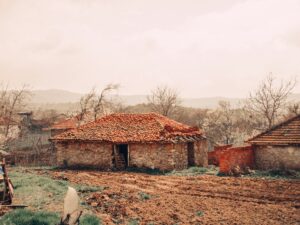Social development in Pakistan – Annual Review 2012-13
Introduction:
Urban-rural differences using major social development in Pakistan indicators like population, demography, education and public health. Despite the high rate of urbanization during the last three decades, Pakistan predominantly remains a rural country, with over 60 percent of the population living in rural areas, according to the official definition of urban and rural areas. Though the overall fertility rates in Pakistan have declined over the years, they still remain significantly high particularly in rural areas. Similarly, the natural population growth rate, which represents the difference between births and deaths, is also higher in rural areas. Nonetheless, the urban population is growing at a relatively higher rate due to rural-urban migration. According to estimates for the year 2010-11, over 10 percent of the urban population consists of migrants.
The life cycle consumption model suggests that different age groups in a population have different economic needs. The share of the working population in Pakistan has increased over time from 48.5 percent in 1981 to 53.4 percent in 2011. In terms of the age composition of the population, the country is experiencing a youth bulge where the share of the youth has increased from 17 percent to 21 percent during the same period. The youth bulge can be used as an opportunity to convert the demographic transition into a demographic dividend and accelerate the pace of economic growth by providing them skills and employment.
As far as the key indicators of education and health are concerned, there exist significant urban-rural gaps on all fronts. The majority working age population (54 percent) in rural areas is illiterate as compared to 28 percent in urban areas. Similar gaps are also observed in the mean year of schooling of the working age population. However, the gaps have reduced over the years and are relatively narrower in the younger age groups also. Similarly, urban-rural and gender gaps are evident in net enrolment rates at all levels of school education. Moreover, the provision of water and adequate sanitation services remains a challenge for the government. Pakistan is a rural country according to the official definition of rural areas.
Social development in Pakistan:
While it is the world’s sixth most populous country, it ranks fourth in rural population. According to the latest estimates of the Planning Commission, Government of Pakistan, more than 61 percent of Pakistan’s population lives in rural areas. Despite the decline in the share of rural population since 1981 more than 113 million Pakistanis continue to live in rural areas. Moreover, 24 million plus persons with average cumulative annual growth rate (ACGR) of 1.6 per cent have been added to the rural population since 1998. On the other hand, urban population is estimated to be 71 million in 2013 and its share has also increased over the years. During 1998-2013, the urban population grew at an average cumulative rate of 3.2 percent per annum and 27 million people were added to the urban population (3 million more than the increase in rural population).
Poverty, Inequality And Social Exclusion:
This chapter Social development in Pakistan, latest estimates of poverty incidence, multidimensional poverty, multiple deprivation and income inequality based on the data of the Household Income and Expenditure Survey 2010-11. It is estimated that about 39 percent of the rural population of Pakistan was poor in year 2011. The incidence of rural poverty is the owest in Punjab and highest in Balochistan. The magnitude of rural poverty is almost equal in Sindh and Khyber Pakhtunkhwa. The trend in rural poverty appears to be negatively correlated with growth in agriculture GDP.
Sustainable Rural Development:
Rural areas are not only engines of economic growth, their populace is also the custodian of natural resources such as water bodies, forests and other biodiversity. Investment in rural development minimizes haphazard rural to urban migration by providing opportunities for people to live and work in their villages with some degree of satisfaction. However, over sixty years of battering natural resources have brought the country to a point where drinking water is a scarce commodity and ground water has depleted to frighteningly low levels. The forest cover is one of the lowest in the world and soil and coastal areas have been eroded, exposing them to devastating impacts of natural disasters.

Conclusion:
In conclusion, Social development in Pakistan is the primary research undertaken by SPDC has exposed some myths. The rural economy of Pakistan is of the same size as the urban economy and has demonstrated the same growth rate over the last decade. It is also more diversified than has hitherto been thought to be the case, with significant presence also of industrial and service activities. An area of concern is the presence of significant differential in per capita income between rural and urban areas and high inequality among households in rural areas. Remittances play a significant role in raising rural incomes, especially in Punjab and Khyber Pakhtunkhwa.
